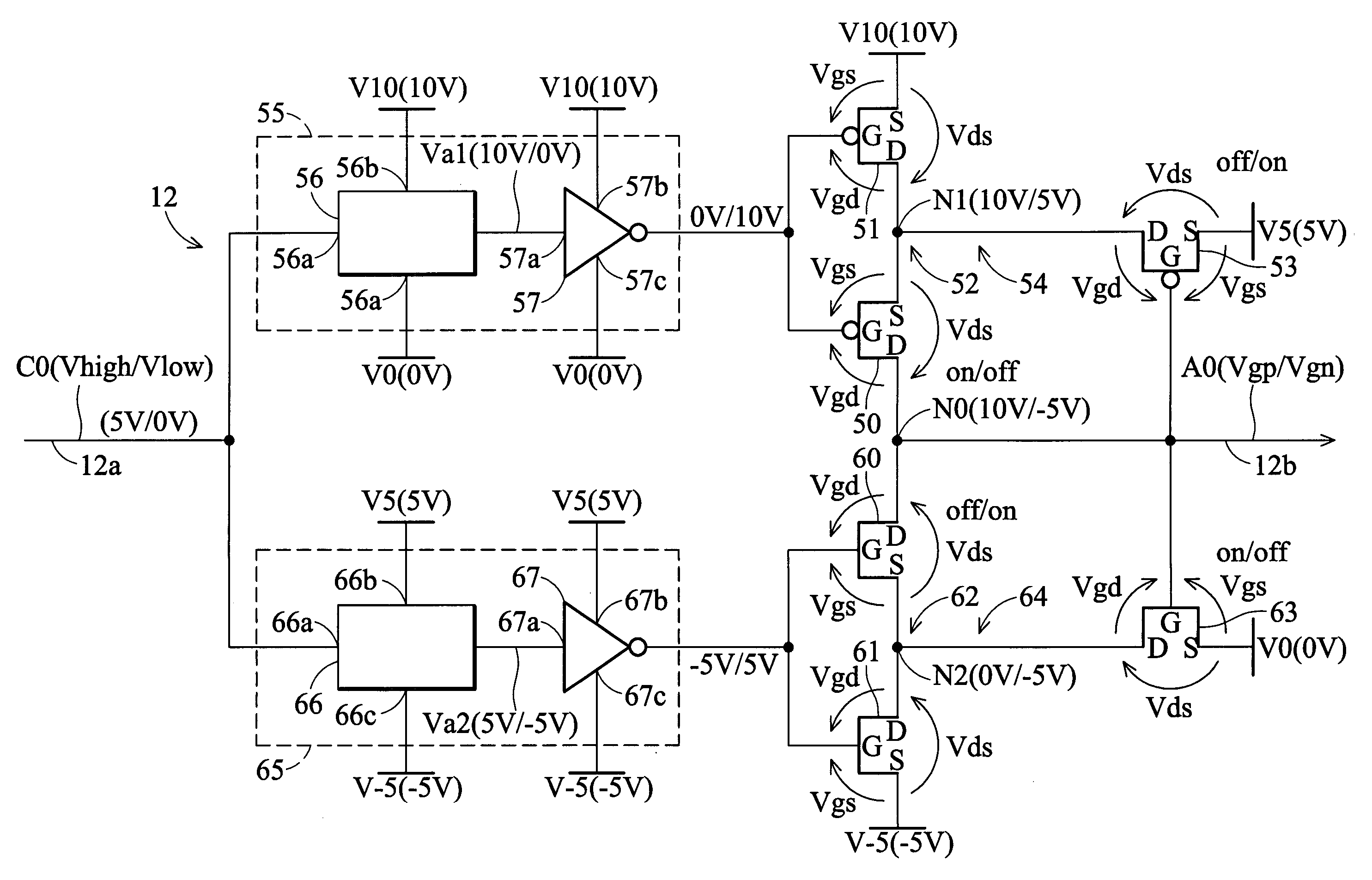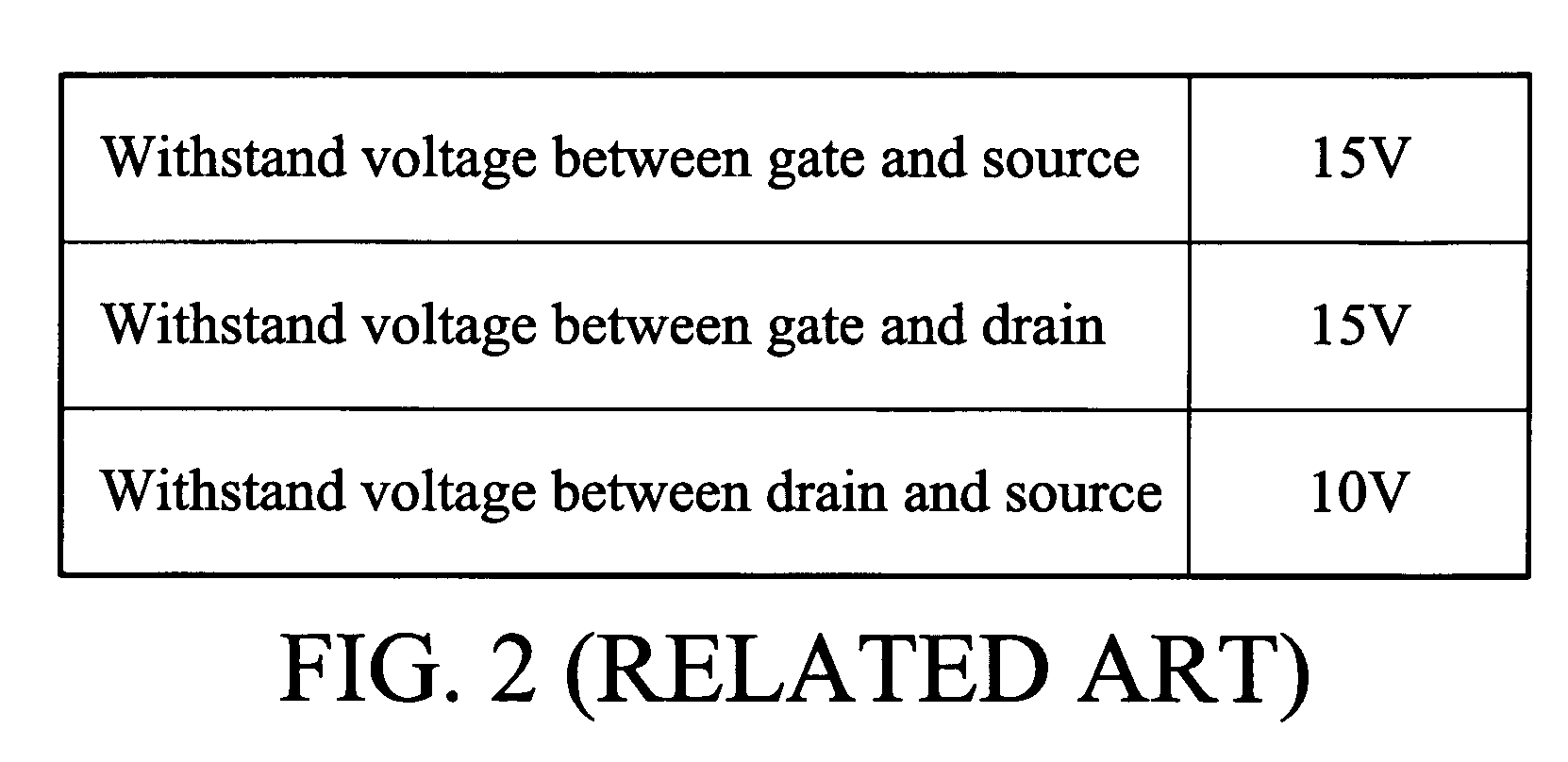Circuit devices
a technology of circuit devices and circuits, applied in static indicating devices, instruments, electroluminescent light sources, etc., can solve the problems of increasing the number of fabrication processes required for transistors, and achieve the effect of wide design flexibility and reducing the number of fabrication processes required
- Summary
- Abstract
- Description
- Claims
- Application Information
AI Technical Summary
Benefits of technology
Problems solved by technology
Method used
Image
Examples
Embodiment Construction
[0027]The following description is of the best-contemplated mode of carrying out the invention. This description is made for the purpose of illustrating the general principles of the invention and should not be taken in a limiting sense. The scope of the invention is best determined by reference to the appended claims.
[0028]FIG. 1 is a block diagram of a circuit formed on glass substrate.
[0029]Display region 2 and non-display region 7 are disposed on a glass substrate 1. Gate driver 13 is formed in the non-display region 7, having a second circuit portion 12 (referring to FIGS. 3 and 5) as one of its features. First the whole circuit formed on the glass substrate 1 is described hereinafter, and then the second circuit portion 12 (referring to FIGS. 3 and 5) is described.
[0030]In display region 2 on the glass substrate 1, m gate lines 3 and n source lines 4 are formed, and TFT (thin film transistor) 5 is formed at intersection of gate line 3 and source line 4. Gate G of TFT 5 is coup...
PUM
 Login to View More
Login to View More Abstract
Description
Claims
Application Information
 Login to View More
Login to View More - R&D
- Intellectual Property
- Life Sciences
- Materials
- Tech Scout
- Unparalleled Data Quality
- Higher Quality Content
- 60% Fewer Hallucinations
Browse by: Latest US Patents, China's latest patents, Technical Efficacy Thesaurus, Application Domain, Technology Topic, Popular Technical Reports.
© 2025 PatSnap. All rights reserved.Legal|Privacy policy|Modern Slavery Act Transparency Statement|Sitemap|About US| Contact US: help@patsnap.com



